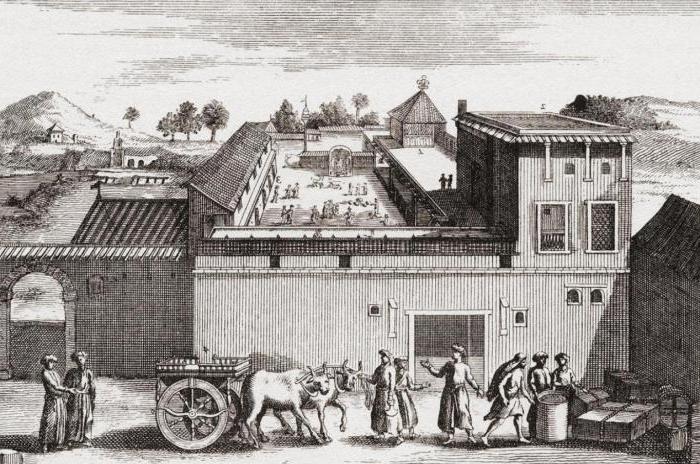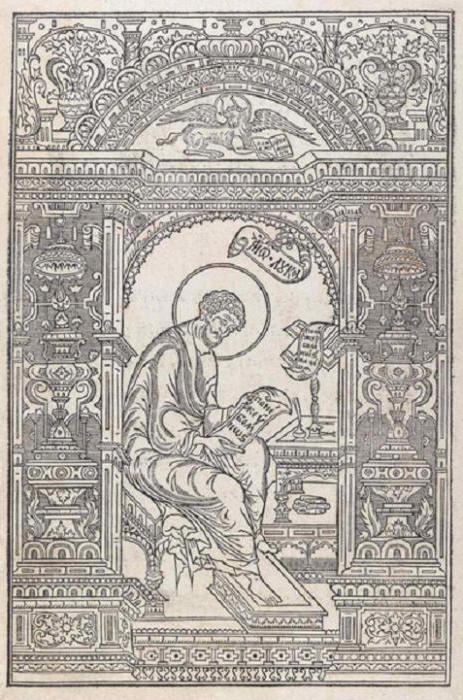Many people know what a drawing is, and what an engraving is, not everyone knows. But both drawing and engraving refer to graphics, the expression of which is a line and a stroke. However, the difference still exists. The engraver applies the image on a hard wooden surface, creating a woodcut. The meaning of the word, by the way, comes from Greek lexemes: "xylon" - "wooden board" - and grapho - "I draw." Then a print is made on paper or other material. About this ancient art form our article.
Ancient engraving technique
So what is woodcut? By definition, this is a method of letterpress printing, carried out using printing boards, on which a drawing is applied by carving. Woodcut - a type of applied art with a variety of applications. Compared to frescoes and mosaics, it is considered a young art form.
The work of the engraver and the process of creating woodcuts began with a drawing. The artist either created a woodcut - woodcut himself, or turned to a professional. Basically, the division of labor for almost four centuries prevailed: the artist created the drawing, the engraver reproduced it.
Woodcut Precursors
Some researchers in the history of graphic art believe that the indirect predecessor of woodcuts is a printmaking, which is a direct impression of a relief image. He first appeared in the cradle of the human civilization of Mesopotamia, in 3000 BC. e. Round stamps for pressing into clay were proof of the creation of prints. This was followed by a period of stencils in ancient Egypt.
This practice of printing images correlates with the time paper appeared in China, tentatively from the 2nd century AD e. As a rule, these were flat reliefs, stamped on a moistened sheet of writing material. Rubbing it with special brushes or tapping received a reproduction of this relief on paper. Next was the processing of this embossed relief. The print method was also used after the appearance of woodcut.
Woodcut in the East
By its origin, the earliest printing technique is woodcut. She appeared in the East. Historical sources in China provide information that printing using wooden boards has been produced in the country since the VI century. However, the earliest of archaeological finds - an engraving that has survived to this day - dates from 868. It depicts a Buddha surrounded by saints. In Korea, fingerprints of text stamped in the 8th century were found.

Buddhism has gained comprehensive significance in the cultural life of Japan. So, in 741, the ruler of the state was ordered to build a Buddhist temple in each province. By that time, temple ensembles in the city of Nara were created. In one of them, in the Khoryuji Temple, the oldest examples of woodcuts have been preserved to this day (this is also a printed text). The first, fairly reliable date in the history of Japanese printing is the year 770. This year, a million small pagodas 13.5 cm high were made in order to put printed Buddhist spells in each of them and welcome to their temples. These are unsolicited separate pages in the form of two planks with ties.
Woodcut in Arab Countries and Western Europe
Engravings from wooden planks appeared in the Arab countries as a result of their penetration from the countries of the Far East. Using woodcuts in Egypt, books were published in Arabic relating to the period between the X and XIV centuries. Also in Egypt, so-called patches were used to print patterns on fabrics, and this is also a woodcut.
The rapid spread of woodcuts in Western Europe dates back to the 15th century. It was similar to the technique by which boards for heels were made. Samples of such tablets are preserved in the form of works with ornaments and plot compositions of Italian work. A fragment of a printed form carved in France depicts a crucifix, dated to 1397.
The Early Renaissance era gives xylography a slightly different meaning. Engraving has no decorative and applied value, but develops as an independent art form. The range of prints extends from individual sheets to cards and calendars of mass consumption. In 1461, the first book in Germany was published with woodcuts.
Ancient prints from Japan
The question of whether book printing is a borrowed or independent phenomenon in Japan has been resolved differently to date. A number of scholars believe that such art as xylography in Japan developed from the production of printed fabrics, while others claim that it came to Japan from China. However, the oldest xylography monument (Darani) was discovered in Japan, and not in China.
Japanese engravers in their works depicted various scenes of everyday life and dynamic poses from the actors' repertoire. Such prints participated in Kabuki exhibitions and prints. By the beginning of the 19th century, color woodcut was widely popular in Japan. It was performed from several boards painted in different colors. When Japan opened its trade routes to Europe in 1868, famous artists such as Toulouse-Lautrec, Degas, Whistler and Van Gogh became famous collectors of these prints and often brought woodcut style aspects to their own works of art.
Engraver Stages
The techniques for performing xylography since its inception have become more complicated, but the basis for its implementation has remained the same. Stages of work on woodcut are as follows. The engraver's main tools are a knife, chisels of various widths and a chisel, with which he creates a drawing on the board. The wooden board on which the picture is “knocked out” is a saw cut of a tree with soft wood (pear or beech). The board is primed before work. On the board prepared for work, the image in the mirror image is knocked out by the above tools.
The next step in the work will be rolling a roller on the drawing of a special printing ink. A sheet of paper or material is superimposed on the surface of the board, on which the drawing should be printed. The print can be done either manually using a lever press, or using an electric press machine. The drawing goes to the material. The engraving is done.
Texts and illustrations were printed using the same technique before the invention of typography. The craftsmen were able to convey a variety of emotional colors in the contrasting black and white lines of their engravings. This is clearly seen in the "Dance of Death" by G. Holbein and the powerful "Apocalypse" by A. Durer.
Why engraving, not drawing?
Understanding how difficult the method of making woodcuts is, you ask yourself the question: why does an artist do complex and labor-intensive work, rather than drawing on paper? The picture is unique. No matter how many copies from this picture, they remain reproductions. And this is not art. In the reproduction there is no elusive presence of the author. There is another author in it, transmitting his energy, his colors in a copy. That is, this is just a reminder of the original.
The main quality of woodcuts is the ability to replicate a drawing. Using the prepared stencil on one board, made by the author, you can get prints in the required quantity. All this will be a work of authorship under which its creator can affix his signature.
Woodcut in Russia
The first representatives of this type of graphics include engravers of the mid-19th century E. Bernadsky and V. Mate. The latter was a great master and an outstanding teacher. Big masters came out of his engraving class at the Stieglitz School: A. Ostroumova-Lebedeva, I. Fomin, V. Masyutin, P. Shilingovsky. These masters formed the school of Soviet woodcut, continuing to work with old themes of graphics: landscape, portrait, book illustration. A.P. Ostroumova-Lebedeva was at the forefront of the author's woodcut.
After 1920, V. Favorsky became the central figure in woodcuts. This is an artist of a wide range. One person combined an engraver, artist, decorator, monumentalist, decorator. But, in the opinion of Favorsky himself, he more than revealed himself in such an area as book woodcut. His school in the Soviet woodcut took a leading place, and many of his students became prominent artists (D. Konstantinov, A. Goncharov, M. Pikov).
Engraving exhibition in Moscow
In November 2015, the State Tretyakov Gallery hosted an exhibition entitled Materials and Techniques of Engraving. Woodcut. It featured engravings stored in the storerooms. Among them are about 200 original works and prints, as well as more than a dozen graphic albums. Timeframe display covers the period from the beginning of the XVII to the 1930s. When creating the exhibition, the chronological principle and the desire, as far as possible, to maintain the integrity of the collections received were taken into account. Visitors could get acquainted with materials describing the technique of woodcut. The exhibits were examples of all types and forms of woodcut, starting with popular print and ending with linocuts.

One of the exhibits was a pear frame that withstood 87,000 prints. It was from her that the sheets of the altar gospel of the beginning of the 17th century were printed. Before the introduction of phototechnology, xylography was in demand as imitating pencil drawing and painting. Engravers performed picturesque paintings in a mirror so that the authenticity of the canvas was preserved.
At the exhibition, various eras in the art of woodcut were demonstrated. These are Japanese, European and Russian charts. Boards and prints were presented. The exhibition introduced the works of contemporary authors, their engravings, as well as various woodcut genres.